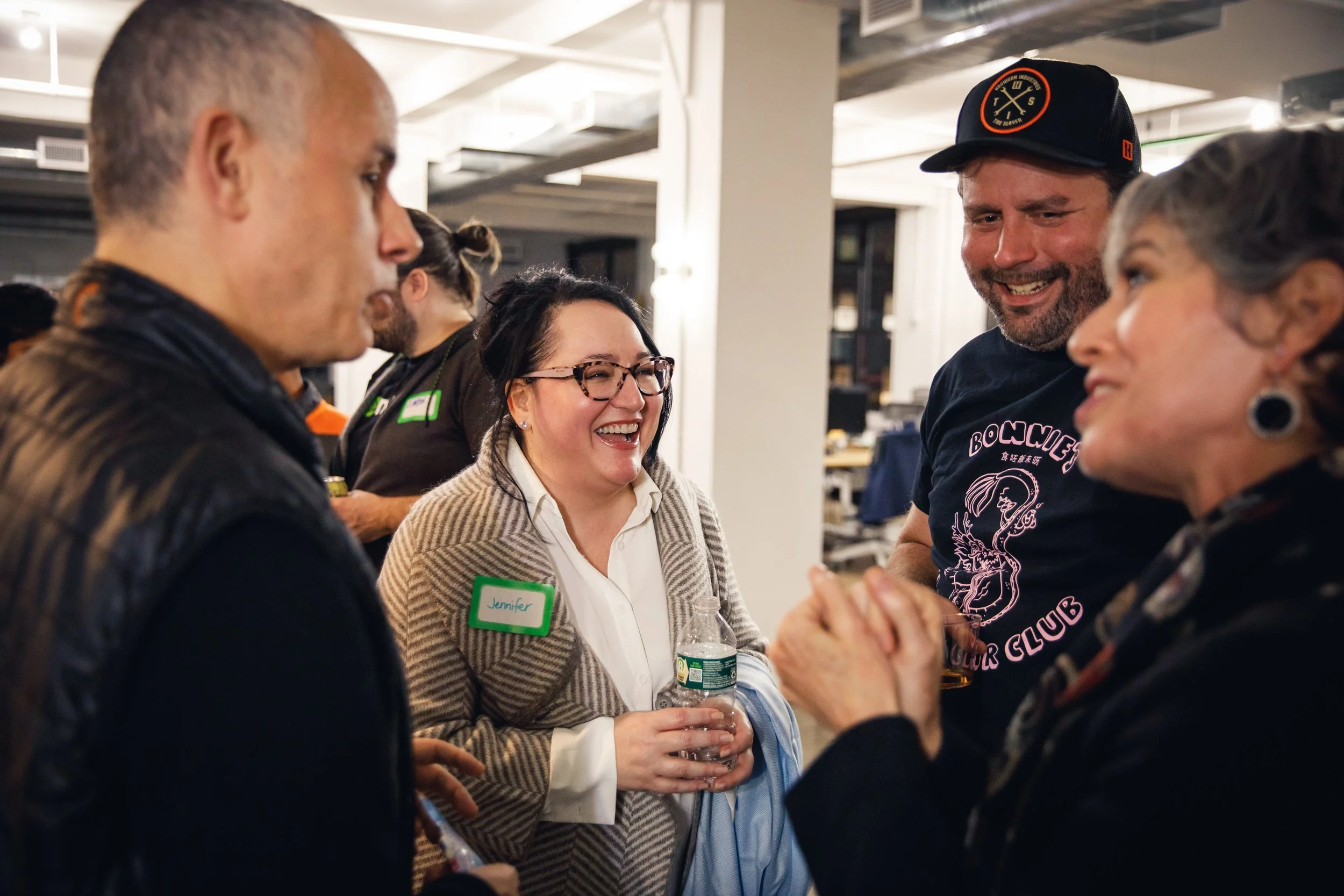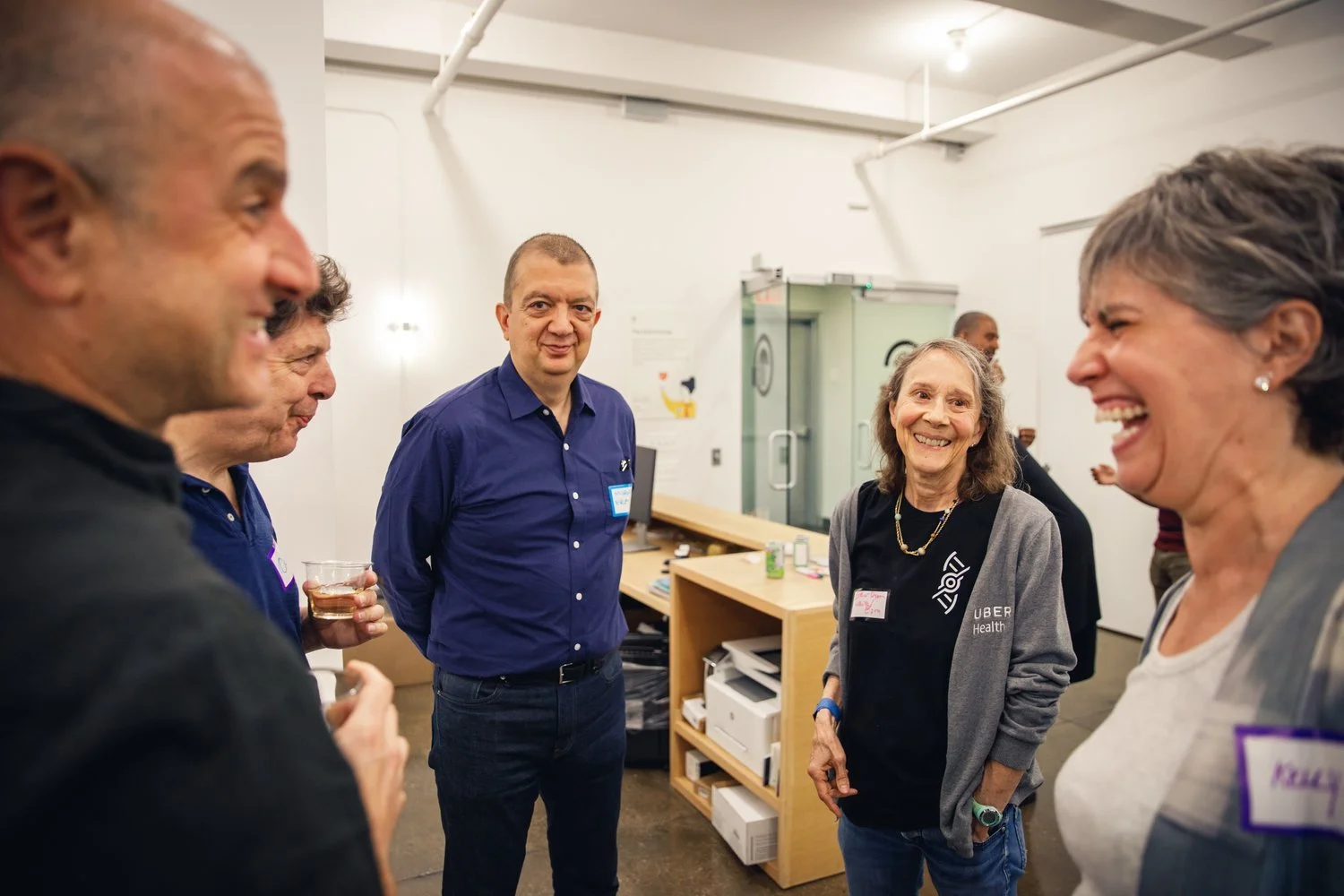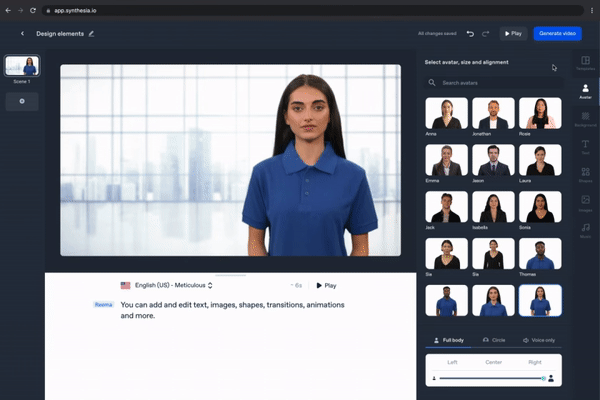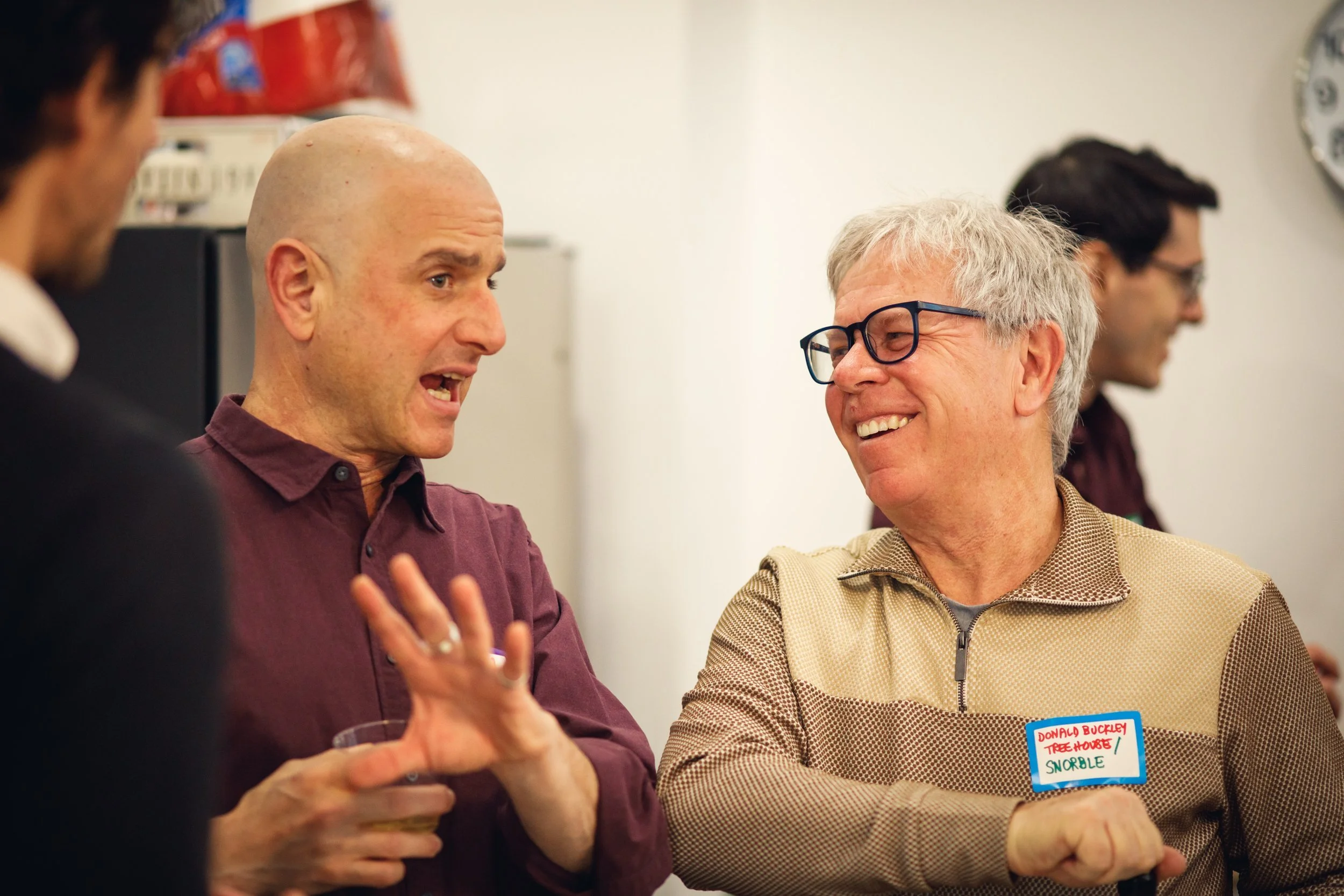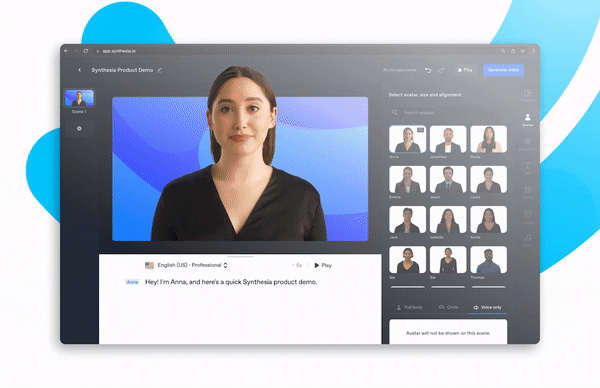Insights from Ty Ahmad-Taylor’s 32 years working at NYTimes, @Home Network, Samsung, Meta, and Snap
/Interview with Ty Ahmad-Taylor, VP of Monetization at Snap
Ty Ahmad-Taylor is VP of Monetization at Snap. He also sits on GoPro’s board of directors. He had been VP of product marketing at Meta since 2017, leading an 800-person organization across product/engineering and sales, which is similar to his previous role at Snap. Before that, he ran George Lucas-founded audio & video firm THX as CEO.
Ty’s background: 32 years in information design, 26 years in consumer-facing software and product development leadership, and 25 years in interactive television services development. He has worked at four startups (one went public, and the other three were acquired), and at large social, media, and consumer electronic companies (Samsung, Viacom, and Comcast).
In this fireside chat with LDV’s Evan Nisselson, Snap’s Ty Ahmad-Taylor shared his views on three things that every CEO should do, inclusive teams, systems thinking, and an exclusion filter that could make our experience of using social media so much better! They also touched on ideas ripe for AI automation, machine learning algorithms that make TikTok successful, and the mixed reality environment that’s coming soon.
If you missed our 9th Annual LDV Vision Summit, this is your chance to watch the video or read this shortened & lightly edited transcript.
Evan: 27 years ago, in Silicon Valley, we worked together at @Home Network. Prior to joining @Home Network, you were at The New York Times. What made you jump from the New York Times to @Home or to Silicon Valley?
Ty: It was February of '96. In '95, I was covering the internet, special effects, movies, and video games. Netscape had just gone public.
I grew up in the Bay Area. One, I was homesick. Two, rather than cover what was going on, I wanted to be a part of it. Three, Roger Black, who at that time was the creative director for @Home, had been fired from The New York Times and so he had a vendetta to settle. He was looking to bring me on board to settle his vendetta and I was more than happy to play my role in that Shakespearean tragedy.
Evan: You started as a designer, then a creative director, obviously designing for print or graphics, and then for the web in the early days of the internet. What changed as far as your design approach, if anything?
Page layout & page design by Ty Ahmad-Taylor
Ty: I was an information graphics designer at The New York Times, which involved some page layout and page design, but it was essentially information design.
At @Home, I was tasked to come up with broadband internet pages.
At that time, Yahoo's pages were sized at about 25K, and so we had a budget allocation of roughly 125K per page and so we took a different approach. We were designing a web portal at a 640x480 screen dimension that was 125K to load. We did stupid things like we used rendered buttons that were art instead of text that was rendered through CSS and tables. I did an animated GIF that was 18.6 megabytes of the Unabomber morphing into somebody else. It took down all of the servers because we didn't have any staging servers in place. That quickly necessitated putting staging servers in place, and I got a stern talking about bringing down the service.
Evan: Most everybody that was on the internet back then was on 14.4 or 9600 baud modems versus @Home. We were pushing the envelope on bandwidth. How do you describe what we were doing?
Ty: We were providing internet access over cable modems and it was high-speed internet access, not dial-up. At the time when we launched in Fremont, California, which is our test bed for the entire United States, the access was uncapped, but it was a T3 circuit, 45 megabits per second, which you can now get into your home. That's what we were delivering to the entire city of Fremont.
We had a hundred testers who on average would see 1.5 to 2.0 megabits down, based upon the DOCSIS standards or the cable IP standards of the time delivered down into their homes, which was several orders of magnitude faster than anything that they could get over dial-up telephone lines.
Evan: That enabled us to be more visually creative and/or use larger GIFs or videos.
Ty: We had full-screen video and larger photography. We were using text over photography in a way that is now not considered efficient either, but it was something that we did at the time because we didn't know any better.
Evan: In 1997, 12 months after we joined, we were fortunate that @Home Network went public. What was your biggest learning experience through those early days on the internet that maybe still is part of your empowering others, or what was some of that history of then and now that is still with your mindset?
Ty: At that time, we assumed that people wanted the full-screen garden experience. The person who managed me came from eWorld, an online service with a managed garden experience operated by Apple. It was a locked-in experience where you had a safe environment with a human-curated guide to the internet. In 2023, it seems absurd. Who needs a human-curated guide to the internet, if anything?
Video Editor John Polizzi and Art Director Ty Ahmad-Taylor film a cloning video for the, uh, dubious benefit of subscribers. Mattel declines to pursue legal action for "Ken-dismemberment.”
April 1997: Burke Culligan, Production Manager, Halle Winkler, Senior Technical Designer, and Ty Ahmad-Taylor try to locate his screen amidst all of that artistically inspiring clutter.
>> Check out Evan’s flashback to Silicon Valley in the mid-’90s: The People Of @Home Network
I was talking to somebody last night, and they said that one of the great uses of the new artificial intelligence agents is that you can use them for travel. You can say, "Give me the top 10 restaurants in Paris where I should eat and the top 10 museums that I should see." It renders good results that you can then edit. It provides the links to those, rather than you having to go search them out. At that time, we were using human-curated guidance and images to help people discern what was the best of the web.
We fought over the categories. "We should have lifestyle categories, we should have a sports category, we should have a games category." When you are working as you are now, with abundance, the categorizations don't make sense.
Evan: After a couple of gigs at big companies after @Home Network, you founded FanFeedr. Why did you jump from the big company to start a company, and what you learned during that process?
Ty: I started my company in the fall of 2008 when the world was burning. I thought that it was an opportunity to hire engineers cheaply, but also to be able to raise capital.
I was turned down 43 times for raising venture capital, and it was on the 44th meeting that I was able to secure $2.2 million in what was then an A round for the company with seed money I had provided myself.
Perhaps I was foolish in thinking that I could start something during an economic downturn, but I wanted to do it when valuations were low and I thought there was an opportunity to hire great engineers, and I had a cluster of great engineers who worked with me on using Python as the primary framework that we were using to develop the site.
I also wanted to do something myself. Having seen other entrepreneurs be successful, I had the time and energy in my thirties to do it. It's not something that I would pursue now in my fifties, but certainly, at that time it was a valuable learning experience for me, and we were able to have a successful exit and return capital at a multiple to the investors and to the people who worked with me.
FanFeedr team in 2011 in Dumbo, Brooklyn
Evan: What was FanFeedr?
Ty: It was real-time sports aggregation. I was a Golden State Warriors fan who lived in New York, and I wanted to be able to get all of the Golden State Warriors information without having to go to (you're going to laugh at some of the brand names I'm going to mention) Yahoo, Bleacher Report, AOL, the blogs that the team ran, the official NBA website, ESPN or anyplace else. I wanted all that information along with the real-time scores collated automatically and delivered to me.
I licensed photos from Getty and AP Images and we ran them along the feed. Then we had sort of machine learning techniques to give you all of the news and information about the Golden State Warriors.
We had to do the same thing, for example, for the San Antonio Spurs versus Tottenham Hotspur, and I knew the difference between Tottenham Hotspur, which is a football team, to use the British term, versus the San Antonio Spurs, which is a basketball team.
FanFeedr was sold to Samsung in October in 2012.
Ty in front of the Samsung Visual Display building in Suwon, South Korea
Evan: What was your biggest mistake during those days?
Ty: Here’s a thing: you're not building trucks at a Ford factory. If you're building trucks at a Ford factory, you want to make sure that the assembly line is working, you have robots and you have other kinds of capital that you have to worry about, as well as just-in-time delivery of mufflers, etc.
What you find in the information industries that we're all working in is that the capital that you have is human capital. I don't mean to de-essentialize the humanity of the people who are working for us, but the real investment and the real thing that you have are people. With understanding that human capital is the most important thing that we can have, hiring great people and reducing risk were the key learnings I had.
I got good at firing people who were underperforming or not up to snuff and who were not doing the work that was required.
As a CEO, there are three things for you to do. The first thing is to make as much money as possible ethically, and the flip side of that is don't run out of money. The second thing for you to do is to set priorities and non-priorities for your team, then the third thing is to set culture.
Do you want to run an inclusive team where the best ideas are heard, or do you want to do a top-down organization where you're the dictator? What I found is that the inclusive organizations, where you migrate most of the decision-making to ICs who are closest to the problem that needs to be solved, are the companies and the teams that are successful.
Evan: You've worked at major companies like Comcast, Viacom, THX, and recently Meta, where you had 800 people on your team. What are the similarities and the differences that you're now leveraging as a senior executive, with many different responsibilities than you had as a smaller team running your own startup, or are they the same?
Ty: The principles are the same. Part of the culture that I also had was growing and promoting people. I'm passionate about developing people and bringing them along. That's important for a CEO or for any executive leader to do for their organization. They should be thinking more broadly and strategically, using systems thinking, about how the company makes its monetization goals, whether you're on the consumer side of the business or on the monetization side of the business.
Evan: Let's talk about the visual content and visually communicating as an extension of your design background. At Meta, part of what you were overseeing was many different products. Tell us a little bit about the different products, and how important was visually communicating or visual tech to your role there.
Ty: When I came to Meta, Instagram was about photos, and Facebook was about photos and text-based updates. What both services are now morphing into is becoming entertainment platforms where the video is king.
If you look at the effective monetization in terms of dollars per hour for video, it is lower than what you're getting either for photos or for short videos, because the new competitive feature set is how we compete with TikTok. Every company is facing that.
TikTok is an entertainment company, and the core of what they do is that they are able to string together clips that have the same content. Let's say that it's a video of a 25-year-old woman who does an ollie, which is a skateboarding trick, at a skateboarding park near the ocean. They can show you 25 videos that look like that because they have a deep content understanding of what's transpiring in the video. They get that visually and they get that through human curation, but a lot of it is machine learning, and that's the advantage that they hold over others.
What you saw during my time at Meta was the evolution from static photos to a short video, then to long-form video, but understanding that long-form video monetizes at roughly half the rate, or the goal is to get it to monetize at half the rate of what you were getting with things like Stories, or with the static photos that people post in their newsfeed on Instagram.
At Snap, we are also competing with TikTok in the attention economy but we are primarily a messaging service that uses the camera as a window into people's expression of personality, with the notion that you don't have to be as precious as you are on Instagram. Rather than presenting your optimized life, what we're urging people to do is to share their real life with their close friends and contacts.
Evan: What excites you? What has changed in your creative capturing of content?
Ty: The primary outlet that I use is Stories, on Snap. I'm trying to make short entertaining movies. Evan's known me for multiple decades... My sense of humor is self-deprecating. I love poking fun at myself. I've got a 17-year-old and a 15-year-old. It's my foibles with them, my missteps, my inability to dance in their eyes, and things of that sort.
It also shows my passions and the things that I'm most concerned about, which are typically art and architecture, and my ability to bear witness to that. Also the stereotypical things like food and pictures of nature. I'm trying to create a compelling short film, and I often mark the last segment of a story that I do as “Fin”. I don't feel too precious about it because I know that it's ephemeral.
I'm trying to communicate what's going on in my life in a way that people understand. My father passed away in February, and I did a slight homage to him on Instagram and a story. I saved the video, but it was up for only 24 hours. People celebrated his life, as I did, through that form. That felt affirming for me and gave me a great sense of community. That's one of the ways that video and images can convey emotion.
Evan: That piece was fantastic! I remember watching it. Where do you think things are going next in visual communication? What are you missing now or what are you looking for, for your own experience and for Snap?
Ty: I'm missing an AI that can assemble material. I'm on the board of GoPro, and so I shoot a lot of GoPro footage. I have videos and still photos on my phone. The act of assemblage in the editing experience seems to me to be a prime candidate for artificial intelligence to do something smart around the collection of photos and videos that people have. You see glimmers of it with things like Memories on Facebook or On This Day from Apple and things of that sort, but it still isn't seamless.
None of the video and photo-sharing services have an exclusion filter. They don't accommodate real-life relationships. I had a long-term relationship that ended two years ago. What I would like is an exclusion filter that says, "I don't want to see this person," but there's no service, whether it's Google Photos, Amazon Photos, or Apple Photos, there's no service that allows for the exclusion of certain individuals to the best of your ability. There's a real opportunity, not just from an editing standpoint, but from what's displayed on a rotating basis standpoint, to take into account human relationships and how fragile they can sometimes be. These are some of the ideas that are ripe for exploration.
Evan: What's your main focus today at Snap? The title is VP of Monetization Strategy, which ties perfectly back to what you were saying earlier about being focused on creating value and empowering a team. Are there specific projects that you can share that you're working on?
Ty: We recently announced that we have 780 million monthly active users and 400 million daily active users. We've been able to corner the youth demographic – people who are aged 13 to 25. We're also leading the world with regards to AR – augmented reality development, which in many ways is mixed reality because it’s showing you overlay on top of what you're seeing either through your camera phone or eventually through glasses.
If you look at our app, it's five different apps in one. There's a camera. We open up to the creative aspect of imagery, and we have augmented reality lenses that you can apply. There are people who use them on a regular basis. That cohort is known as Camera Lovers. The largest cohort uses the app exclusively to communicate with one another. It's a communications channel but you're showing your real unvarnished life rather than the authorized life that you might see at my former employer. The Maps tab shows you the location of yourself and your friends within a given geography. That also has ripe opportunities for AR augmentation. Then we have our Discover tab, which contains your friends' stories, which are ephemeral videos and images that your friends put forth, along with curated content from content providers like ESPN and others. Our Spotlight tab looks like what you would see on TikTok, but it's an unconnected video, meaning it's not from your friends, but it's a video that you would like strung together through content understanding in a way that you find entertaining, while you're waiting for your friends to potentially respond to a Snap message or something of that sort.
The totality of that represents vast opportunities for monetization, whether it's through augmented reality lenses sponsored on the Camera tab, ads that occur in between stories in the Discover tab, ads that occur between disconnected content in the Spotlight tab, or the best place to get coffee locations on the map and other augmented reality things. Then last but not least, you can monetize the Messaging tab, which is not visual, with things like lead generation and clicked messaging, which is popular at other providers.
Evan: Is it where “My AI” interactions occur?
Ty: My AI occurs in the Messaging thread. You can ask questions both pertinent and impertinent, and it will answer them using the ChatGPT base.
I'm excited about the opportunity for it to return visual results, like “These are the places you should go in Paris, and here are what they look like”.
Evan: Music to my ears! It should definitely deliver visuals. What would be the ideal visual tech that you'd want to have in 20 years, but you'd like today?
Ty: I think there are four companies that are working on it. Magic Leap is still in existence. I think Google, Apple, and Meta are working on it.
We're working on it, but ultimately our form factor looks like glasses, that gives you information about the environment that you're in that you otherwise would not be party to. “What’s the name of a coffee shop that's just down the street? Who is this person that I know reports to me, but I don't remember their name?”
The compute load for doing this doesn't fit into glasses. If I were to foretell the future, any glasses would have to be paired with a phone so that they can use the compute power and the bandwidth that a phone provides. It’s a way to provide a mixed reality environment that folks live in.
What's interesting is that a lot of what you see in science fiction movies is a good foretelling of the future, but none of them have foretold what mixed reality would look like or how it would function, in the way that Minority Report told a lot of the way that we would think about the future with regards to automated cars and manipulating things in a touchless environment. Nobody foretold what augmented reality and mixed reality look like. It's an area that's ripe for innovation, and it's nothing but visually oriented.
Hope you enjoyed this fireside chat as much as we did. Check out other sessions too!
Here’s what Ty said about our 9th Annual LDV Vision Summit: “LDV Capital has deep domain expertise and an impressive portfolio of companies leveraging visual technologies and AI. This was clearly showcased at their recent LDV Vision Summit. It was such a pleasure to meet such a smart audience during the LDV Vision Summit, and I hope that I was able to impart some of the learnings from my past mistakes to the conference attendees." See other reviews, insights and photos.
Earlier this year, we spoke to 11 brilliant professors & researchers, who are focusing on AI – Dr. Lydia Chilton, Dr. Olivier Elemento, Dr. Mackenzie Mathis, Dr. Fernando De La Torre, Matt Uyttendaele, Dr. Karen Panetta, Dr. Serge Belongie, Dr. Ramesh Raskar, Dr. Daniel K. Sodickson, Dr. Nikhil Naik, Dr. Gaile Gordon – and many of them mentioned mixed reality devices, visuals situated in people's existing environment, augmented reality and AR glasses.

















